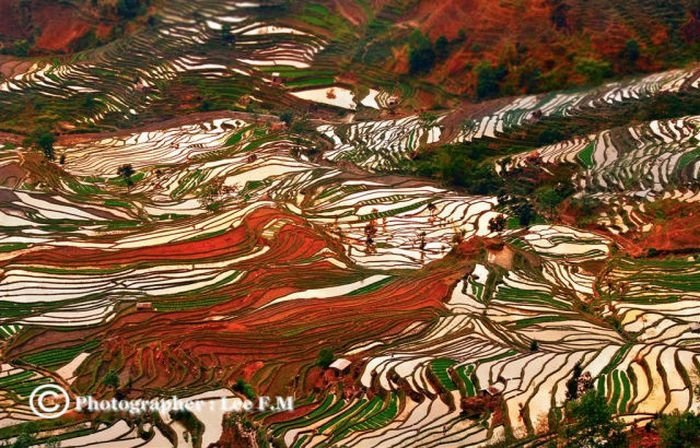|
|
Paddy Fields, Rice Terraces
|
History
Archaeologists generally accept that wet-field cultivation originated in China. At Caoxieshan, a site of the Neolithic Majiabang culture, archaeologists excavated paddy fields. Some archaeologists claim that Caoxieshan may date to 4000-3000 BC, but as of now the oldest excavated rice paddy field dated by absolute scientific dating techniques are from Korea. There is archaeological evidence that unhusked rice was stored for the military and for burial with the deceased from the Neolithic period to the Han Dynasty in China.
Paddy field farming goes back thousands of years in Korea. A pit-house at the Daecheon-ni site yielded carbonized rice grains and radiocarbon dates indicating that rice cultivation in dry-fields may have begun as early as the Middle Jeulmun Pottery Period (c. 3500-2000 BC) in the Korean Peninsula. Ancient paddy fields have been carefully unearthed in Korea by institutes such as Kyungnam University Museum (KUM) of Masan. They excavated paddy field features at the Geumcheon-ni Site near Miryang, South Gyeongsang Province. The paddy field feature was found next to a pit-house that is dated to the latter part of the Early Mumun Pottery Period (c. 1100-850 BC). KUM has conducted excavations that have revealed similarly dated paddy field features at Yaeum-dong and Okhyeon in modern-day Ulsan.
|
|









